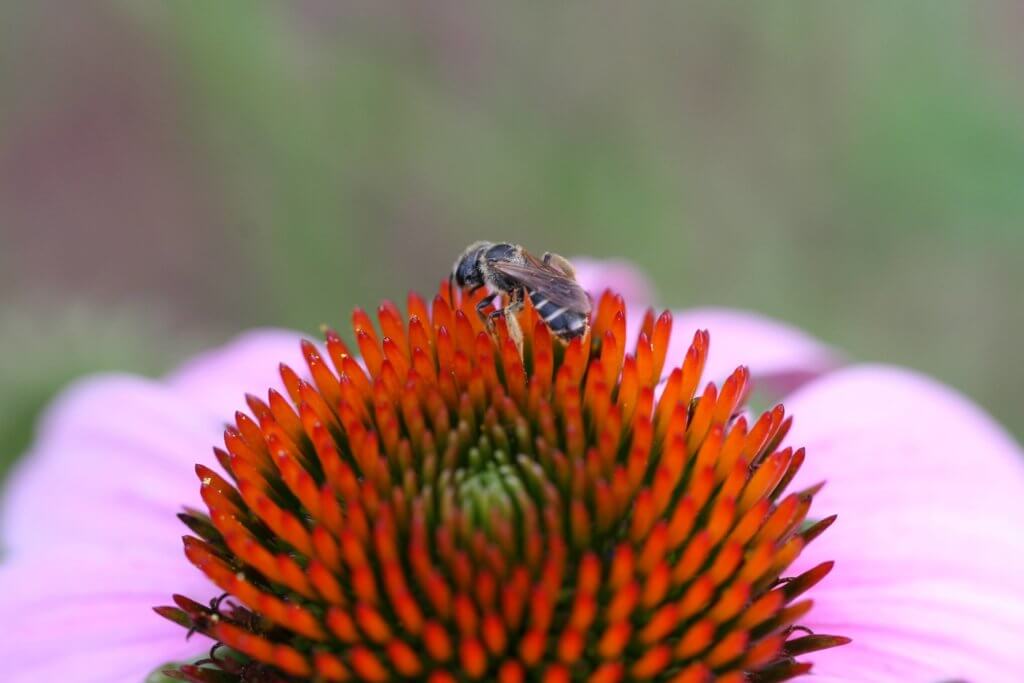The importance of pollinators
By Karol Kelly
Photography by Allison Griffin
Every spring, I am always happily surprised when the first seemingly drunken butterfly meanders past me. It is likely that by the time the butterflies make their appearance, the more discreet insects have been visiting those “weedy” blossoms of dandelions or henbit for some time.
The bees and butterflies seem to be the go-to guys when we talk about pollinators. But, the diversity of pollinators is quite impressive. The line-up includes wasps, flies, ants, beetles, hummingbirds, songbirds, mammals, reptiles and even the newest resident at the Museum of Arts and Sciences: African straw-colored fruit bats.
Pollination — the movement of pollen from the anthers (male) to the stigmas (female) of a flower — eventually leads to the production of a new plant. For some plants, like grasses and pine trees, pollen is moved with wind and/or water. Much more common, however, is the plants’ dependence on another organism to “spread the love.” Many flower petal colors, fragrances and even their sweet nectar are perfectly suited for the creatures that pollinate them and help them flourish.
In Georgia, pollinators are big business! A recent University of Georgia study determined that the value of pollination on agricultural commodities in our state topped $360 million. We’d be without many of our favorite fruits and vegetables if not for these tiny heroes. Think of all of the good strawberries from Elliott Farms we might have missed!
PLANTING FOR POLLINATORS
There are a multitude of lists to help choose plants that will attract pollinators to your landscape. Lists may classify plants based on such things as site conditions, flower color, mature size of plants or even more specific information like which plants serve as nectar plants for which butterflies.
Our native plants are ideal to attract native pollinators, and our local garden centers are overflowing with beautiful plants to choose from. One word of advice is to use plants that will extend your flowering season as long as possible. Blueberries are early bloomers and are great, low maintenance plants in addition to attracting pollinators in March. Asters and golden rod can extend the flower availability into the fall, for example.
PROTECTING OUR POLLINATORS
One common question we get is, “How can I kill (insert most hated insect here) without hurting my bees?” Even as you fight off the squash bugs, Japanese beetles and other insects that are feasting on your summer vegetables or prized roses, there are steps you can take to protect the good guys.
Avoid pesticide use if possible. Properly identify the insects you see in the landscape and be certain they are causing plant damage before you pick up that spray bottle. Some of the larger, slower insects like tomato hornworms can be hand-picked and placed in containers of soapy water.
If insecticides are necessary, pick one that targets your garden pest rather than a broad-spectrum product. Read the fine print on the label. Follow the directions on the label to protect yourself, the environment and your plants.
Also, apply insecticides in the early morning or late evening when pollinators are less active.
Read more about Rosalyn Carter Butterfly Trail
Karol Kelly is an Extension Agriculture and Natural Resources Agent with Bibb County Extension. Please send questions about pollinators or other topics to hello@maconmagazine.com.


